May 17th was the second session of the seed teacher class. We invited teacher Cailiang Xu to have a deeper discussion with everyone. The main content of teacher Xu’s teaching was image science. The lengthy texts were organized into schematic diagrams to help clarify the meaning of the text and prepare for teaching more systematically.

In addition to the graphics in the textbook, teacher Xu also encourage students to create their own graphics so that their creativity could be flexibly used in teaching.
Then teacher Xu introduced the three skills of KWL reading. Before teaching, teacher Xu guided students to think about the information before, during, and after, and not rushed to tell students the content of the book, so that they would know the classification and unknown information, and can absorb the knowledge learned.
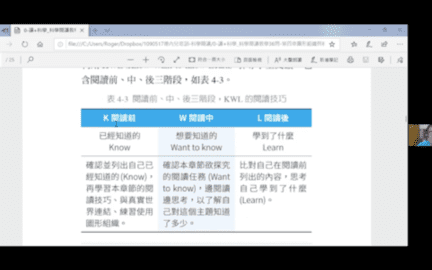
First teacher Xu led everyone to read a short essay and used the three details of the organization chart to support the big theme. Each student reads the article from a different angle and filled in with different information. There was no correct answer in the blanks. As long as the students could explain the purpose why you filled in this answer, it demonstrated that drawing the organization chart has really helped them clarify the text. Teacher Xu even mentioned that the main point of drawing is to summarize the key points and streamline the text. In the process, teacher Xu actively interacted with the students and gradually led these unfamiliar knowledge to the seed teachers.
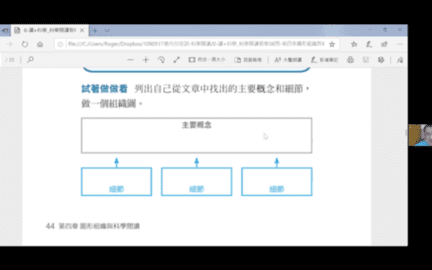
Then, the teacher took out a candle and lighter, and led the students to jump from the text to the actual operation. Through the vivid experiment, the students’ understanding of the teaching method were multiplied. Scientific reading with experiments made reading more interesting, and how to extend the text content was students’ homework.

In the afternoon class, we watched the teaching videos recorded by teacher Feng Chang Huang and teacher Jin Lan Pan. Teacher Huang taught the theory of education, which is a very important part when entering the teaching site. With “reading” as the core goal of learning, the teacher encouraged students to derive more creativity from integrating curriculum planning, teaching design and skills. Then, Mr. Huang separately talked about the key points that must be paid attention to in the curriculum planning and teaching design. To take into account the needs of students, it was also necessary to make flexible adjustments in teaching according to different types of courses and the age of students. And Teacher Huang also shared many teaching skills, suggesting that students should consult a lot of materials before designing courses. The content needs to be based on theory, and focus on areas that you are more familiar and interested in, so that you would be more comfortable in the mastery of the course.
Immediately, teacher Huang used the picture book “Excavator makes a sound every year-the country has changed” as an example, starting from the selection of teaching materials, to the integration of picture books and extensions of the content. Gradually he teaches the steps in course planning, so that students could clearly grasp the procedure. Finally, the teacher also introduced four activities, and shared his own photos as examples. The content that teacher Huang prepared for this class was very rich and diligent. With the hope that the students can internalize and absorb the curriculum, he has added his own innovative thinking.
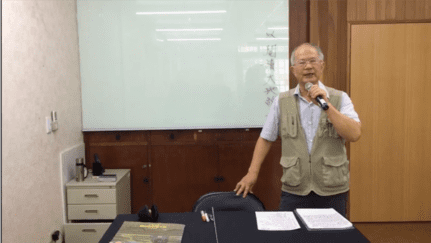
The course prepared by teacher Jin Lan Pan was the ultra-practical handicraft teaching, aiming to make practical handicrafts using materials that are readily available and to create high-quality works with lowest-cost materials. Teacher Pan demonstrated six handicraft teaching methods. First was the combination of tissue and pigment, making us think about the principles and proportions of color mixing. In order to cultivate the concept of color; the second work is the use of kitchen paper towels. The paper towels have its adhesiveness after being mixed with water and white glue, and can pinch any shape on the drawing paper. Finally, a picture was formed. This handicraft allows children to express their creativity while having fun.

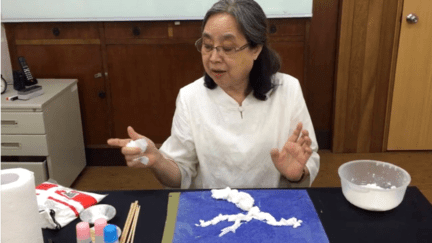
The third handicraft was to use a rope to stick an outline, then spread the foil paper and color it with an oil-based pen. In this way, children could think more about what methods could be used to better present the work while coloring; The next work was to use foil paper to made different shapes. With the skillful hands of Teacher Pan, the foil paper turns into a swan, a cane and a bell, thus training children to actually show their imagination on the finished product.

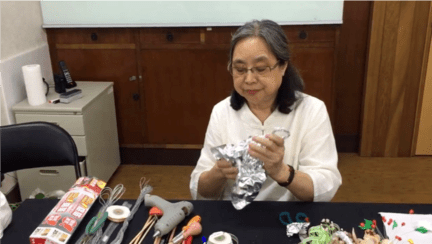
Another work was a flower basket; using foil paper and a box as a base, while inserting flowers in it. The children would not only experience the fun in the process of flower arrangement, but also imagine how to use the space appropriately. To enhance the sense of space; the final work was to mold light clay into shapes such as roses, leaves, etc. There are many tools that can be used while making graphics. Therefore, children would understand the importance of making good use of tools and master the skills of using tools.
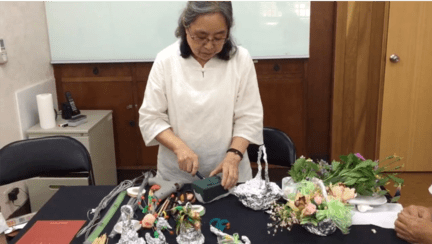

The materials used by teacher Pan were low-cost and easy to obtain in daily life. After the teacher’s creativity and ingenuity, these materials have become unique handicrafts. She believes that students could also get inspiration from life, and used daily materials as teaching aids and activity extensions for the courses.
In this way, the course on the second day came to an end smoothly. In fact, due to the epidemic, we have been complying with government’s policy with safety considerations and constantly adjusting. Finally, we decided to try online teaching methods. However, this change in teaching mode was not only a big challenge for us, but also for students and teachers. Teachers who had always been proficient with on-site student interaction must try to use a new mode to clearly express the content of the course and allow students to absorb it.
In this process, it was necessary to learn new media quickly. Because of their respective teaching content and teaching styles, complement with the use of technology, the courses presented were all quite different. Through the screen, we could still feel each other’s enthusiasm and devotion. We are very grateful for the cooperation and dedication of these experienced teachers. We would also like to thank everyone who participated in it and everyone who continued to care about us. We believe that everything was done through the best arrangement possible. All efforts will eventually turn into the cornerstone of growth and build the bridge of love for those in need.

dener.org@gmail.com
No. 29-2, Section 1, Sanmin Road, West District, Taichung City
04-23767919
Donation Support
We sincerely hope that if everyone is willing to contribute a little, these tiny but meaningful supports will eventually become a stream someday, then become a lake, then finally merge into a huge force of help as big as the ocean, benefiting many more children in need.
立案字號:台內團字第1050001715號
公益勸募許可字號:中市社團字第1110122969號
©2016 DENER All content rights reserved.